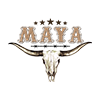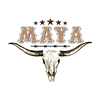DTF Transfers vs Embroidery: Choosing the Right UV DTF Strategy for Custom Apparel — Blank T‑Shirts, Hoodies, Hats & Dropshipping
Introduction: Why the right decoration method changes your business
When you sell custom apparel—whether on Etsy, Shopify, at craft fairs, or to wholesale buyers—the method you choose to decorate garments affects your brand perception, margins, turnaround times, and scalability. DTF transfers (and the newer UV DTF workflows) and embroidery are two of the most popular choices for entrepreneurs, small apparel brands, and print-on-demand sellers. This long-form guide covers everything you need to decide: technical differences, costs, production workflows, design best practices, packaging and fulfillment, and how to use each method strategically across blank t‑shirts, hoodies, hats, and dropshipping offerings.
Core terminology (quick reference)
- DTF transfers — Direct-to-film prints transferred to fabric with adhesive powder and heat press.
- UV DTF — DTF process integrating UV-curable inks or UV curing in the workflow to speed curing and improve certain performance characteristics.
- Embroidery — Thread-stitched designs created by embroidery machines; ideal for logos, caps, and textured branding.
- Print-on-demand (POD) — Fulfillment model where items are printed per order, reducing inventory risk.
- Dropshipping — Supplier prints and ships orders directly to customers on behalf of the seller.
At a glance: DTF vs embroidery (summary)
- Visuals: DTF = photo-realistic prints and gradients; Embroidery = textured, high-end look.
- Durability: Embroidery is extremely durable; DTF (including UV DTF) is durable with proper application and wash testing.
- Costs: DTF favors low volumes and many colors; embroidery benefits larger runs of simple logos.
- Turnaround: DTF and UV DTF typically faster for POD/dropshipping; embroidery has longer machine time per piece.
- Best uses: DTF for full-front tees/hoodies and complex art; embroidery for hats, polos, and premium branding.
Understanding UV DTF: advantages and limitations
UV DTF isn't a single standardized technology—it's a set of workflows where UV-curable inks or UV curing steps accelerate drying and can improve adhesion on some synthetic blends. Key benefits:
- Faster curing and less handling time, which helps same-day pickup and high-throughput dropshipping.
- Potentially improved wash resistance and colorfastness when inks and curing are optimized.
- Better performance on certain blends (e.g., polyester-heavy garments) when paired with correct pre-treatment.
Limitations: UV DTF requires precise process control and supplier expertise. Results vary by ink chemistry, film, adhesive powder, and heat-press profile—always request wash tests and physical samples.
Detailed comparison: cost, speed, and perceived value
Cost per piece and setup
Embroidery has an upfront digitizing cost and longer machine time; for a one-color chest logo, per-piece embroidery might be $5–$10 at low volume but drops with scale. DTF transfers have minimal setup fees and excel for one-offs or multi-color art; per-piece costs for small runs typically fall in a comparable or lower range depending on garment and adhesive. UV DTF may carry slightly higher material costs but reduces labor and drying bottlenecks.
Turnaround and scale
For small brands and POD sellers, turnaround matters. DTF allows quick changes, fast sampling, and economical single-item prints—ideal for dropshipping models. Embroidery shines at scale for consistent logos and premium SKUs, but it takes more machine time per item.
Perceived value and pricing
Embroidery often commands a higher retail price because it reads as premium—especially on hats, polos, and outerwear. DTF can command strong prices for limited-edition graphics and art-forward streetwear; perception depends on design quality, mockups, and product photography.
Which garment types suit each method?
Blank t‑shirts
DTF and UV DTF are top choices for blank t‑shirts when you want full-front, all-over, or photographic prints. Embroidery works for small chest logos but is less ideal for large, detailed graphics. For soft-hand feel, choose thinner adhesive films and lower heat settings.
Hoodies
Hoodies tolerate both methods. Embroidery adds texture and premium feel on chest and sleeve placements. DTF gives bright, detailed designs across fronts and backs—with heavier fabrics you may need adjusted press profiles and adhesive amounts.
Hats
Hats typically lean toward embroidery because of their curved surfaces and need for durable thread-based branding. DTF can be used for flat-paneled caps or patches but usually requires extra finishing (sewn patch, pre-printed panel) to match the durability and look of embroidery.
Production workflow: from file to finished product (practical steps)
- Design prep: Supply vector files (AI, EPS) for logos and high-res PNGs (300+ dpi) for DTF art. For embroidery, include fonts and provide clear placement/sizing guides.
- Color management: Ask for ICC profiles or color proofing. UV DTF may require different profiles—request test swatches and Pantone references if color fidelity matters.
- Sample & testing: Order sample prints and embroidered pieces. Run wash tests (10–20 cycles) and evaluate hand feel, cracking, and fading.
- Production: Confirm heat-press parameters for DTF (temperature, dwell time, pressure) and machine settings for embroidery (stitch density, backing type).
- Quality assurance: Incorporate a QA step where the supplier photographs each batch, reviews stitch quality, and checks for misprints.
Care instructions and returns: setting customer expectations
- DTF care: Recommend washing inside-out on cold, gentle cycle, tumble low or hang dry to extend life. Avoid high-heat ironing directly on prints.
- Embroidery care: Typically more forgiving, but advise gentle cycles to reduce thread abrasion. Trim loose threads and avoid direct high-heat ironing on dense stitch areas.
- Returns: Document acceptable tolerances for color, alignment, and minor defects in your dropshipping agreements to minimize disputes.
Packaging, unboxing, and micro-branding tips
Presentation affects perceived value and repeat purchase rates. For higher-ticket embroidered items, consider branded tissue, swing tags, or a thank-you card. For DTF-printed tees and hoodies, include care labels and a short note about the print method to educate buyers. Small touches increase LTV and reduce returns.
Side-hustle and scaling strategies for 2025 sellers
- Use DTF/UV DTF for limited drops, seasonal art, and collaborations—low setup means quick iteration on trends like Y2K nostalgia or minimalist micro-logos.
- Move consistent top-sellers to embroidery if demand stabilizes—this can improve margins and perceived value.
- Test bundling: pair an embroidered hat with a DTF graphic tee as a premium bundle to increase average order value.
- Outsource fulfillment: partner with a dropshipper to avoid inventory headaches while you focus on marketing and design.
Pricing examples and margin calculations (simple model)
Example per-unit cost assumptions (illustrative):
- DTF printed blank tee: $8 (blank) + $4 (DTF print) + $2 (fulfillment) = $14 cost. Retail at $28 = 50% margin.
- Embroidered polo: $12 (blank) + $7 (embroidery) + $3 (fulfillment) = $22 cost. Retail at $44 = 50% margin.
Consider fees (marketplace, payment processing), returns (assume 2–5% for apparel), and shipping promotions when finalizing prices. Use real supplier quotes to refine numbers.
Industry data and trends to watch
Print-on-demand continues to grow as entrepreneurs favor low-inventory business models. Demand for sustainable blanks and transparent sourcing is rising—consider organic cotton and recycled polyester options. Design trends for 2025 include nostalgic graphics, bold typography, small chest micro-logos, and eco-conscious messaging. Sellers who combine strategic SKU testing with a reliable fulfillment partner scale faster.
Why choose a partner like MAYA TX?
MAYA TX supports apparel entrepreneurs with services designed for speed and scale:
- Same-day pickup in Austin for many common blanks and rush DTF jobs—ideal if you need local fast fulfillment.
- Nationwide shipping for reaching customers across the U.S.
- Dropshipping fulfillment: we print and ship directly to your customers, with integration options for e-commerce platforms.
- Wide selection of blank apparel so you can source shirts, hoodies, and hats in one place and standardize your SKUs.
Learn more and request samples on our service pages: DTF Transfers, UV DTF, and Blank Apparel.
Further reading and useful external resources
- Printful — comprehensive POD and fulfillment guides: https://www.printful.com
- Shopify Blog — growth strategies for apparel brands: https://www.shopify.com/blog
- Oberlo — market trends and product research: https://www.oberlo.com
Sample testing checklist (must-do before scaling)
- Order both DTF and embroidered samples for each SKU and colorway.
- Run at least 10 wash cycles and inspect for cracking, fading, or thread loosening.
- Check color accuracy against Pantone targets or brand swatches.
- Test different garment blends (100% cotton, 50/50, polyester blends) to see how each method performs.
- Confirm heat-press settings and embroidery backing recommendations with your supplier.
Final recommendation: a hybrid approach
Most successful apparel brands use a hybrid approach: DTF/UV DTF for artistic, full-color pieces and rapid test runs; embroidery for hats, polos, and core branded SKUs that benefit from a premium feel. That combination lets you leverage fast, low-risk experimentation while building value with higher-ticket embroidered items.
Call to action
Ready to put this into practice? Order sample packs to compare DTF and embroidered finishes, run wash tests, and start small test drops. MAYA TX offers same-day pickup in Austin, nationwide shipping, dropshipping fulfillment (we print and ship for your customers), and a wide selection of blank apparel to support your business. Visit our pages to request samples and pricing: DTF Transfers • UV DTF • Blank Apparel. Contact MAYA TX to discuss dropshipping integration, setup costs, and how we can help scale your custom apparel business.


















